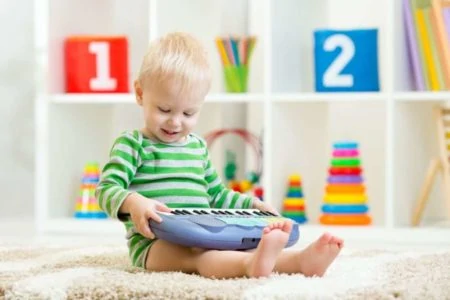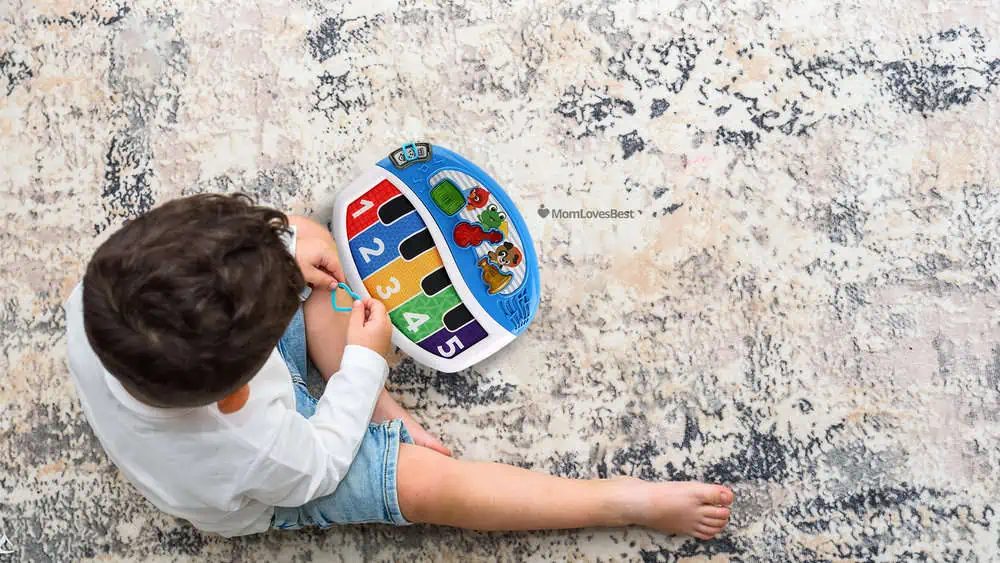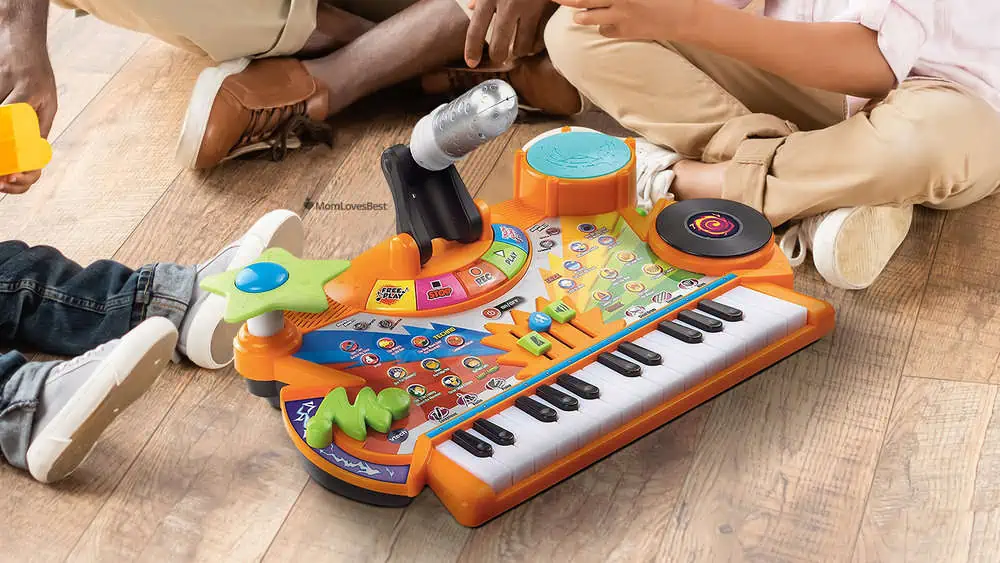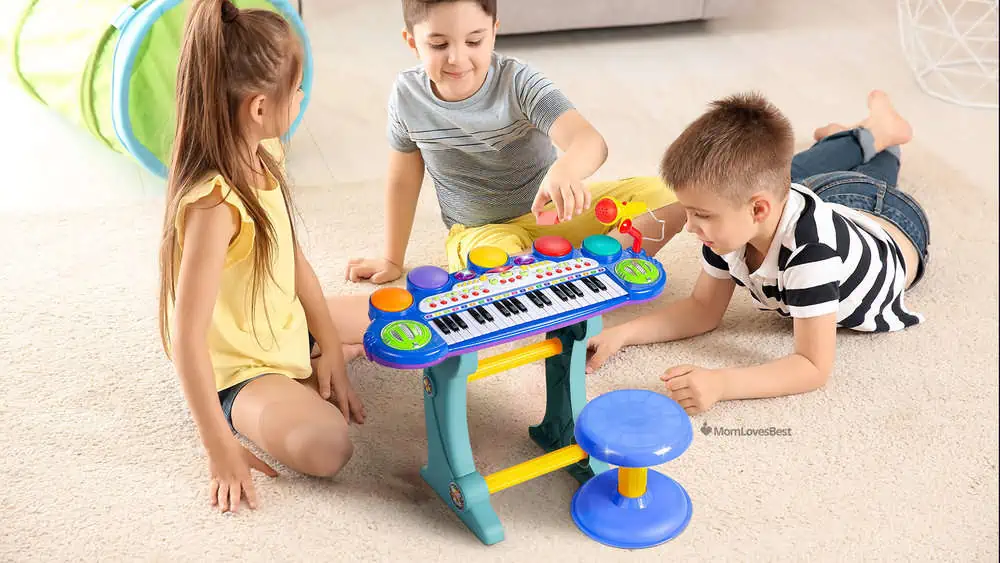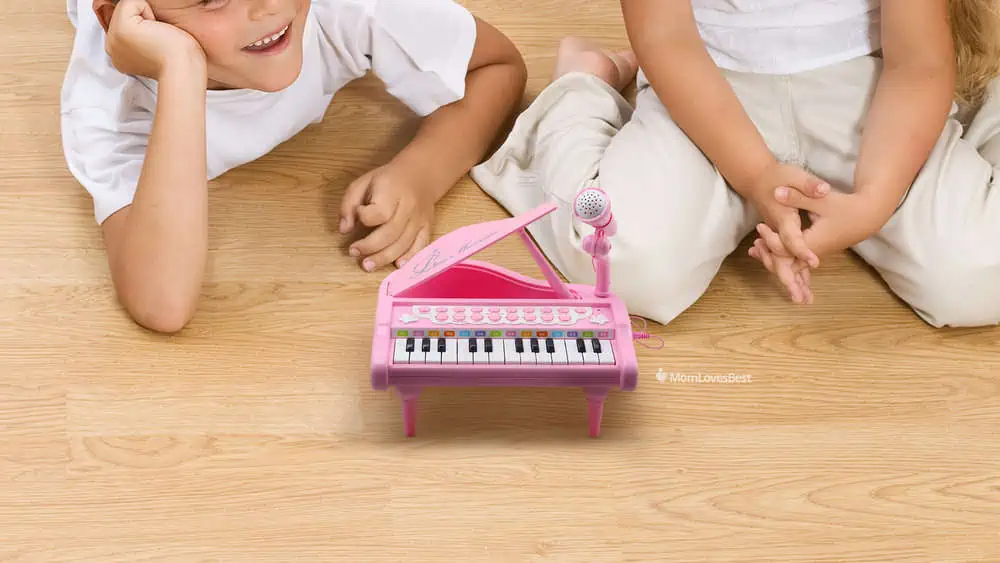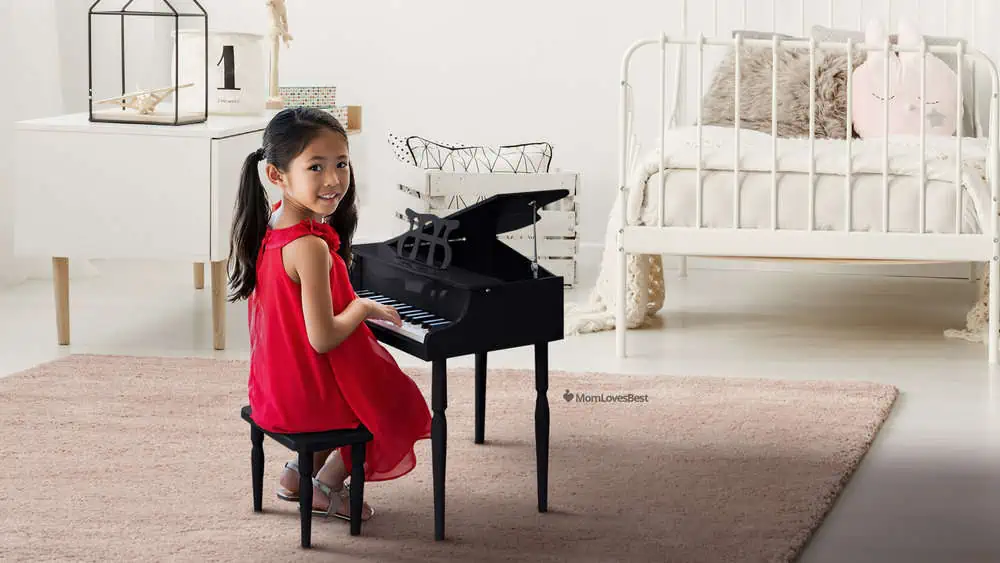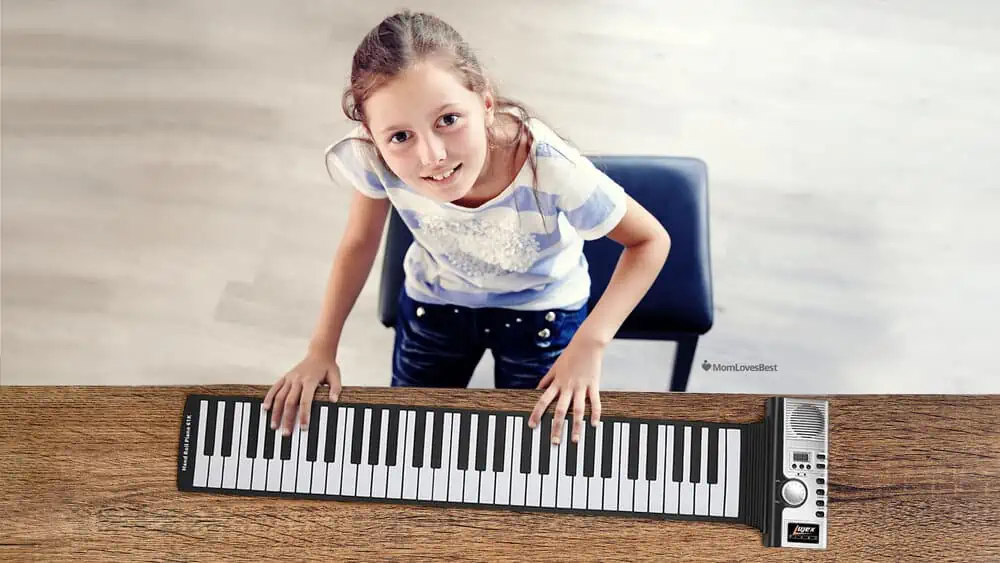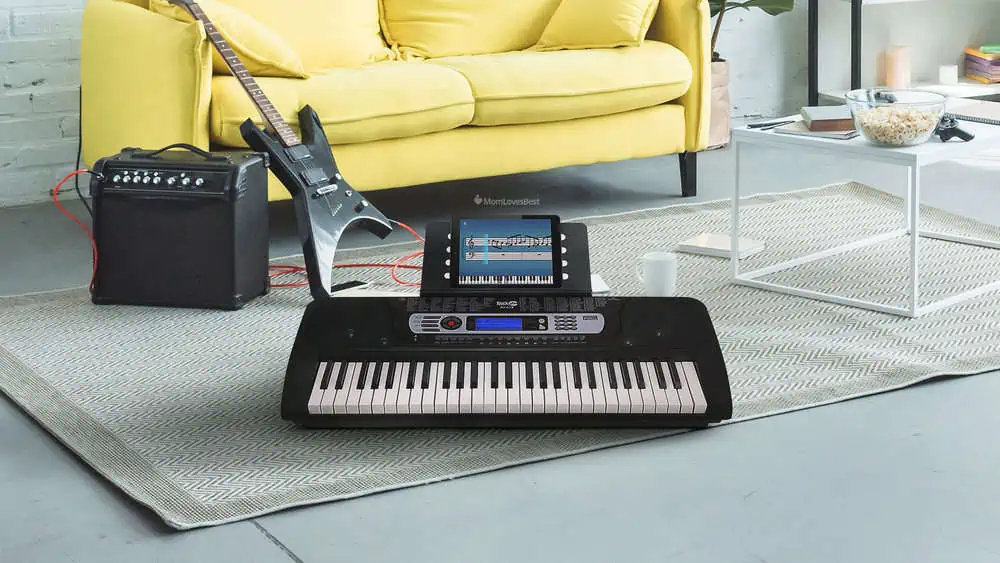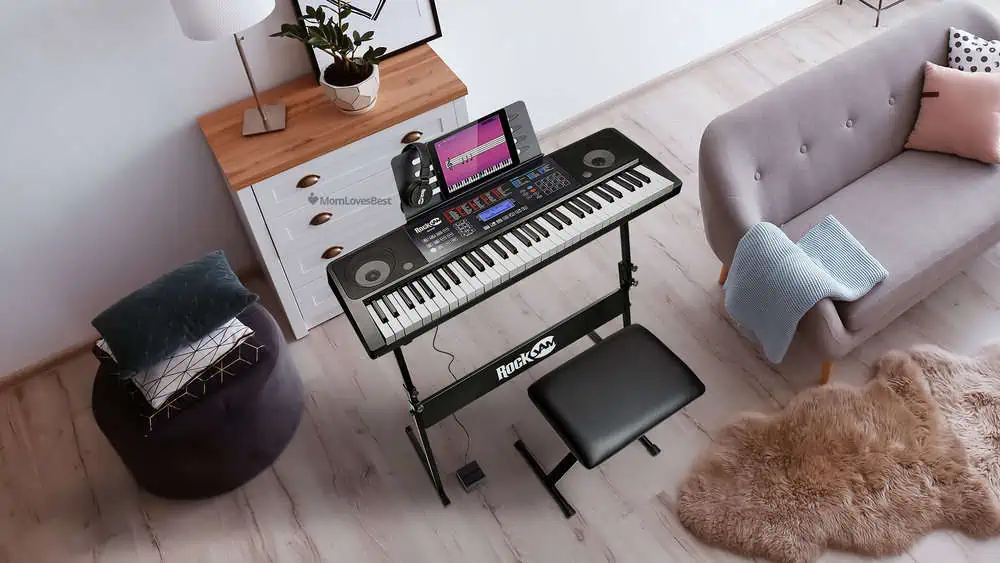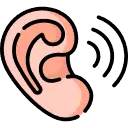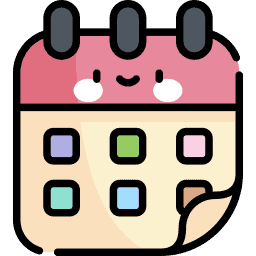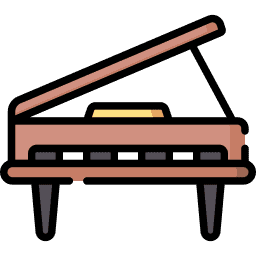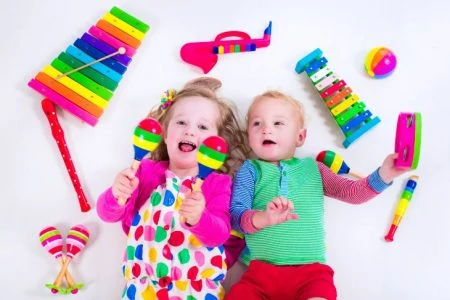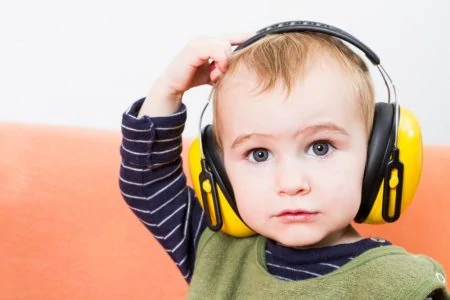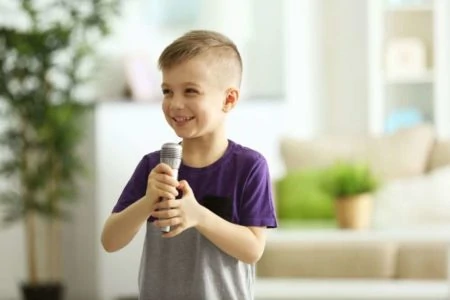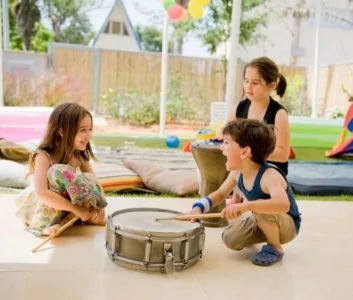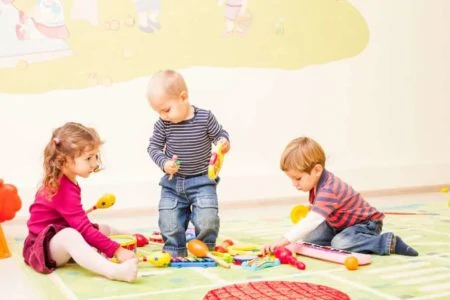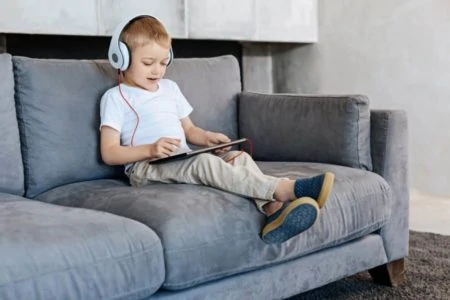The market is flooded with options, ranging from toddler toys to serious digital keyboards. How do you know which one fits your child’s age, skill level, and your budget?
We studied the market, tested the top products, and analyzed consumer feedback to find the best matches for every stage of development. Whether you have a toddler who likes to stomp or a pre-teen ready for lessons, we have you covered.
Read on to find the perfect keyboard to start your child’s musical journey.
- Wide range of features & modes
- Fun for all ages
- Folds flat
- Built-in recording studio
- Includes microphone with voice changer
- Non-toxic material
- Adjustable volume & tempo
- Comes with a stool
- 8 entertaining demo modes
- Built-in microphone
- Record and replay features
- Four musical genres
- Looks realistic
- Hardwood material
- Timelessly elegant design
- Good range of sounds and features
- 60 demo songs
- 61 key piano keyboard
- Waterproof
- Suitable for any age group
- Built-in battery or external power supply
- Various learning modes
- 100 tones and rhythms
- Built-in stereo
- Excellent for beginners
- Power supply included
- LCD display for guidance
How to Choose a Keyboard for Kids
Your choice depends entirely on your child’s age and intent. For babies and toddlers, you want durability, lights, and fun noises. It is less about music theory and more about cause-and-effect play.
If your child is school-aged and wants to take actual lessons, you need an instrument that mimics the feel of a real piano. Here are the specific features to watch for.
Product Reviews
We tested durability, sound quality, and educational features to find the best options on the market. Here are our top 10 picks.
Keyboard Playmat 71
Best Piano Playmat
Recommended for ages 1 and up.
Let’s face it, toddlers love to stomp. Instead of discouraging the noise, this playmat turns their energy into music. It is a massive 71 inches long, making it a “magical carpet” that rewards every step with a new sound.
It features 24 keys and eight instrument sounds, including violin, trumpet, and guitar. If your little one creates a masterpiece, you can use the record and playback mode to save their dance tune.
We found the vinyl material highly durable; it withstands jumping, running, and aggressive dancing. It is perfect for playdates since multiple kids can jump on it at once. When playtime is over, it folds flat for easy storage.
Pros
- Encourages physical activity.
- Durable, wipe-clean material.
- Volume control protects parent ears.
- Folds up for storage.
- Large enough for two kids.
Cons
- Requires 4 AA batteries (not included).
- Defaults to high volume when turned on.
Our Ratings
Discover & Play Piano
Babies learn through sensory play, and this soft-touch piano is designed exactly for that. As your little one hits the “babbling” stage, this toy gives them something to interact with that lights up and responds to their touch.
Don’t let the small size fool you. It introduces animals, numbers, and instruments in three different languages (English, Spanish, and French). We specifically appreciate that it plays classical melodies rather than high-pitched nursery rhymes, which is a relief for parents tired of “Baby Shark.”
It is roughly the size of a magazine, making it the perfect diaper bag companion for car rides or waiting rooms. The soft cloth keys are gentle on delicate fingers, and the speaker lights up in rhythm with the music.
Pros
- Soft, textured keys.
- Compact and travel-friendly.
- Plays classical music.
- Batteries included.
Cons
- Keys are not individual buttons (membrane style).
- Hard to clean in the crevices.
Our Ratings
VTech Record & Learn KidiStudio
Best Toddler Keyboard
If you have a toddler who plays rough, you need the VTech KidiStudio. It offers a robust build alongside a fully functioning recording studio.
This isn’t just a keyboard; it is a DJ station. It comes with a scratch disc, a whammy bar, and drum sound effects. Your child can play along to 40 different songs and sound effects in styles ranging from jazz to techno. The keys light up to teach melody following, which is a great introduction to rhythm.
We love the real microphone with a voice-changer. It encourages your child to sing and perform, building confidence. The plastic is non-toxic and tough enough to survive being dropped, which is practically a requirement for toddler toys.
Pros
- Record and playback features.
- Voice-changing microphone.
- Light-up keys teach melodies.
- Durable construction.
Cons
- Microphone volume is quite low.
- Keys are small for older kids.
Our Ratings
Electronic Keyboard with Microphone
Best Toddler Keyboard with Microphone
This setup makes your toddler feel like a true stage performer. It includes a 37-key keyboard, a working microphone, a stand, and even a small stool.
The variety here is impressive for a toy. It offers piano sounds plus violin, trumpet, and amusing animal noises like frogs and cats. With eight different rhythms (including rock and samba), your child can experiment with genres early on.
The standout feature is the full “concert” setup. Your child can sit on the stool and sing into the mic while playing. Just be warned: the volume can get loud, and the microphone is sensitive.
Pros
- Complete set with stool and stand.
- Microphone allows for singing along.
- Adjustable tempo and volume.
- Multiple instrument and animal sounds.
Cons
- Microphone can cause feedback if too close to speakers.
- Microphone volume is not adjustable.
Our Ratings
Amy & Benton Piano
Best Budget Mini Piano
If you want the look of a grand piano without the price tag (or the footprint), this miniature version is a clever choice. It is styled like a tiny grand piano but packed with electronic features.
It has 24 keys, making it suitable for small hands. Kids can switch between piano sounds, drums, and other instruments. It also features a “music box” mode and disco rhythms for dance parties.
A unique feature is the external cable that lets you plug in a smartphone or iPad to play backing tracks through the piano speakers. This allows your child to jam along to their favorite Disney songs. Note that it requires 4 AA batteries, so stock up before gifting.
Pros
- Stylish “Grand Piano” look.
- Connects to external devices (MP3/Phone).
- Built-in microphone.
- Energy-saving sleep mode.
Cons
- Much smaller than it appears in photos (check dimensions).
- Batteries not included.
Our Ratings
Classic Wooden Miniature Grand Piano
Best Mini Grand Piano for Kids
Sometimes, simple is better. This Melissa & Doug piano abandons flashing lights and techno beats for a classic, distraction-free musical experience.
It features 30 keys and is built from solid wood with a glossy finish, looking lovely in a living room or playroom. It comes with a matching bench and a color-coded songbook to help kids learn their first tunes.
The sound is produced by small hammers striking metal rods, creating a chime-like tone rather than a string piano sound. While it doesn’t sound like a Steinway, it is pitch-accurate and great for teaching basic scales. It is durable, elegant, and encourages focus.
Pros
- Beautiful wooden construction.
- No batteries required.
- Includes bench and songbook.
- Sturdy and tip-resistant.
Cons
- Produces a “chime” sound, not a true piano sound.
- Bench is not adjustable.
Our Ratings
Plixio Electric Keyboard
Best Children's Beginner Keyboard
When your child is ready to graduate from toys to actual practice, the Plixio 54-key keyboard is a solid bridge. It is lightweight and portable, running on either batteries or the included wall adapter.
While the keys are slightly smaller than full-sized piano keys, there are enough of them (54) to play two-handed pieces. It offers 100 rhythms and 100 tones, allowing kids to experiment with sound design.
The “Lesson Mode” is useful for beginners, and the included microphone adds a fun performance element. It is an affordable entry point to see if your child sticks with the hobby before investing in a more expensive Yamaha or Casio.
Pros
- Dual power options (Batteries or Wall Outlet).
- Includes microphone and sheet music stand.
- Lightweight and portable.
- Good variety of tones and rhythms.
Cons
- Interface can be confusing for young kids.
- Keys are not full-size or weighted.
Our Ratings
Lujex Foldable Keyboard
Best Portable Kids Piano Keyboard
Space is often a premium in kids’ rooms. This Lujex keyboard solves that problem by rolling up completely. You can stuff it in a backpack or drawer when not in use.
Despite being flexible, it features 61 keys, the standard number for a beginner keyboard. It is made of waterproof silicone, making it surprisingly durable against spills and sticky fingers.
It has a built-in speaker, but your child can also plug in headphones for silent practice (a parent favorite). While the flat keys don’t offer the tactile feel of a real piano, they are excellent for practicing finger placement and memorizing notes while traveling.
Pros
- Rolls up for ultimate portability.
- Waterproof and easy to clean.
- Full 61-key range.
- MIDI compatible (needs separate cable).
Cons
- Cannot play fast passages easily (keys may double-trigger).
- No tactile feedback on keys.
Our Ratings
RockJam 54-Key Portable Electronic Keyboard
Best Learning Piano
Learning piano can be frustrating, but RockJam tries to make it intuitive. This 54-key board features an LCD screen that visualizes which keys to press and which chords you are playing.
The real selling point is the integration with the “Simply Piano” app (iOS and Android). You can rest your tablet on the music stand, and the app listens to your child playing, offering real-time feedback and gamified lessons.
This model includes a headphone jack and runs on mains power or batteries. It is an excellent choice for modern learners who prefer interactive apps over dusty old method books.
Pros
- Interactive LCD screen.
- Includes access to Simply Piano app content.
- Headphone jack for silent play.
- Vibrant sound options.
Cons
- Keys feel very light/plastic.
- Sound quality is obviously electronic.
Our Ratings
RockJam Electronic Keyboard
Best Music Keyboard for Older Kids
If you are looking for a “one-and-done” purchase, this is it. This RockJam kit includes everything: a 61-key keyboard, a sturdy stand, a padded stool, and high-quality headphones.
This is a full-size keyboard, meaning the keys are standard width. This is crucial for building muscle memory for a real acoustic piano. It comes loaded with 100 rhythms and 100 tones, plus a pitch bend wheel for creative play.
Like its smaller sibling, it pairs with the Simply Piano app for interactive lessons. Because it comes with a stand and stool, you can set up a dedicated “practice corner” in your home, which encourages daily use.
Pros
- Complete kit (Stand, Stool, Headphones).
- Full-size keys aid proper technique.
- Pitch bend wheel for creativity.
- Includes app content for learning.
Cons
- Stool height is not adjustable.
- Keys are unweighted (synth action).
Our Ratings
The Benefits of Learning Piano
Music isn’t just a fun hobby; it is a brain workout. Introducing your child to the piano offers developmental benefits that reach far beyond the music room.
Tips for Teaching Kids to Play
1. Keep It Playful
For toddlers and preschoolers, structure is the enemy of fun. Let them bang on the keys. Turn on the “drum” mode or “dog bark” sound. If they associate the keyboard with fun rather than chores, they will want to come back to it.
2. Short, Consistent Practice
A child’s attention span is short. Ten minutes of practice every day is far better than a one-hour session once a week. Use a timer and make it a game: “Let’s see if we can play this scale three times before the buzzer goes off!”
3. Follow Their Lead
If your child hates classical music but loves Disney movies, buy a Disney songbook. Learning “Let It Go” teaches the same notes as “Ode to Joy,” but your child will actually want to practice it.
4. Know When to Get a Teacher
Apps and YouTube are great for starting out, but they can’t correct posture or hand shape. If your child shows genuine interest and aptitude after six months, consider hiring a teacher or signing up for group lessons to prevent bad habits from forming.
